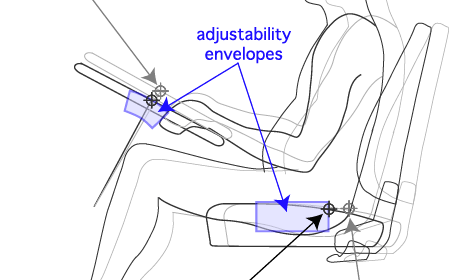One important source of variance in the performance and success of products designed for use by people is the people themselves. In many cases, the acceptability of the design is affected more by the variance in the human users than by the variance attributable to the hardware from which the product is constructed. Consequently, optimization of products used by people may benefit from consideration of human variance through robust design methodologies. We propose that design under uncertainty methodologies can be utilized to generate designs that are robust to variance among users, including differences in age, physical size, strength, and cognitive capability. Including human variance as an inherent part of the product optimization process will improve the overall performance of the product (be it comfort, maintainability, cognitive performance, or other metrics of interest) and could lead to products that are more accessible to broader populations, less expensive, and safer. A case study involving the layout of the interior of a heavy truck cab is presented, focusing on simultaneous placement of the seat and steering wheel adjustment ranges. Tradeoffs between adjustability/cost, driver accommodation, and safety are explored under this paradigm.

